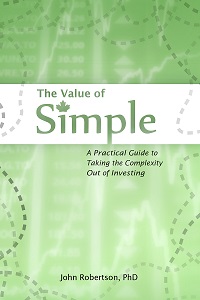I’ve been fascinated by the fertilizer story almost as much as I have been with the energy and banking sectors. I even managed to lose myself some money with Migao earlier in the year. Now that the markets are down and the fertilizer bubble looks to have popped, I’d like to take another look at things.
The Story
People like to eat. I like to eat. Most of our food is grown with the help of fertilizers, especially in the Western world. In order to grow more food on less land, you basically need fertilizers to get the yield up. Adding to this are two factors, the first of which is biofuels (predominantly ethanol from corn in the US and Canada, and from sugar cane in Brazil, and biodiesel from soy and palm oil), and the rising standard of living in China and India.
One of the neat things about becoming a “developed” nation instead of “developing” one is that you can keep more of your population from starving. In fact, it goes well beyond that: in addition to not starving, the people’s quality of life improves, and one of the first improvements they want to make is to their diet. No more fish and rice, they want a variety of food, including more meat. On top of that, more people move out of the countryside and into the cities and factories.
All that adds up to a whole lot of fertilizer demand, which makes investing in fertilizer companies an attractive option.
What Happened
Of course, a lot of people had the same idea, especially when there were rice shortages and food riots. The price of fertilizer and fertilizer companies shot up. Potash (TSE:POT) quadrupled from June of ’07 to June of ’08. It was only in November of ’07 that I started to get interested in the fertilizer story, and at that time I figured that at over $100, Potash (the stock) was too rich for my blood. While the underlying commodity had posted impressive, almost scary increases in price, I didn’t think that it would do that again, and at $100, the stock had already priced in another doubling or so in potash (the fertilizer) prices, which didn’t leave enough of a safety margin for my tastes. I wrote a note to look at it again if it had a pull-back to $80 or so (which is around where it’s at today, hence this article).
Potash (the fertilizer) did end up tripling, and there were indications that it would have another tripling on top of that on the strength of Chinese demand. POT shot up to $240, where at least another doubling in potash prices (according to my back-of-the-envelope figures) would be needed just to keep the stock there, let alone for it to hit some of the ridiculous targets being set. Analysts at the time seemed to fall over themselves bumping up the price.
And then…
And then the credit crunch really hit. Spot prices for potash (and other fertilizers) stabilized and even pulled back. Crop futures dropped, indicating that farmers wouldn’t be able to sell their crops for as much, which means that they wouldn’t be as aggressive in their planting and fertilizing, particularly if fertilizer was expensive. Compound that with a difficulty in getting loans to buy fertilizer, and a hit from high energy prices, and things suddenly weren’t looking so rosy for the fertilizer industry. POT and AGU have given up pretty much all of their gains from the last year.
However, I don’t think the basic story has really changed all that much. I still think fertilizer demand should be strong for years to come. I think that once this credit crisis and recession pass in a year or two that fertilizer demand will pick up again, that people (especially the large populations of India and China) will want to eat better foods, and more of them. There are numerous articles around explaining that fertilizer prices are a very minor input costs to farmers, so even when they go up ten-fold, it’s not really destroying demand.
That said, I’m not as bullish as a lot of analysts are. It’s hard enough to try to peg a value on a company, and trying to predict commodity prices is worse. However, you can’t really do the former without a guess about the latter in this case — and that also leads to a lot of these investments (in fertilizers and energy) being essentially bets on what the underlying commodity will do (with some wiggle room from improvements in efficiency, etc).
So I have in front of me TD’s reports on Agrium and Potash. In it, they predict that potash, which was around $150/ton in 2005 and 2006, and is currently around $500 a ton (after briefly touching the $1000 range), will continue to increase to $700/ton by the end of 2009, and to $800/ton by 2010. I can’t say whether that’s too optimistic or too conservative. I’ve traditionally felt that TD’s analysts were pretty good at being realistic without being overly conservative (CIBC seems to like to shoot for the fences). However, I want to play it safe if I’m going to invest in this. I figure potash (the fertilizer) was pretty stable for two years there, and the rocketing this year looks out of place. So a more moderate price of $250 (a halving from where we are now, a ~40% increase from 2006 prices) by 2010 might be a more reasonable assumption.
TD and most analysts predict that both stocks have 12-month returns of over 100%, and naturally rate each a buy. I’m a little less optimistic, and think that at these prices they’re probably just at fair value. I’m going to wait for a bit more of a pull-back, and just watch for a while. I figure $33 for AGU or $70 for POT (whichever one hits first) is where I’ll start buying (and even there I’m only expecting a 100% return after ~5-8 years). It seems weird to continue to wait on these, since I do fall for “the story”, and since they’ve had such huge sell-offs lately, and also have seemed to stabilize for the last two months or so. However, despite the fact that the reckless optimism seems to have washed out, no one that I’ve read has yet turned completely pessimistic on them, so I think they might have a bit further to fall.
The Case for Caution
Part of what makes me cautious is that the story isn’t completely adding up. Somehow back in the spring there were crushing food shortages. Yet now, just 6 months later, the largest chicken producer in the US could be facing bankruptcy. What happened? Yes, the credit crunch really bites companies that were highly leveraged on the ass, but does that really explain everything, or is there an underlying problem in the food business story? Is the world not quite as hungry as we thought?
Could people wanting a beefier diet simply wait a decade, or simply not be able to afford it ever? On top of that, we have the little fact that China is a communist nation, and could decide to stop importing fertilizer on a whim. It’s not likely, but that fear is there (likewise with Migao, a specialty potash producer: the government could step in and cut their margins to satisfy farmers). Also, China just announced their own stimulus plan, which indicates that all is not rosy there, and that the growth and improvement in diets and lifestyles might not continue.
The Role of Biofuel
I think that in theory, biofuels make a lot of sense for a lot of reasons: sustainability, greenhouse gasses, and energy independence. While I think that electric cars and mass transit are better solutions for most of our people-moving needs, there are cases where liquid fuels are going to be needed, and for the long-term we should look at biofuels. However, in the short term, they rely on subsidies, and their return on energy is not great (or, according to some, even above 1). Top that off with people suddenly becoming concerned that biofuels are starving people, and that could be bad for the sector.
I mentioned in a previous post that the amount of food stock going to biofuels was actually quite small, so it’s really tough to nail the food crisis on that door. However, in the US at least, biofuel almost exclusively comes from corn, which is a very fertilizer-intensive crop. So while it’s not going to change food supply overall much, cancelling biofuel initiatives might have a decent impact on fertilizer demand. And trouble is brewing, as major ethanol producers run into financial trouble.
So unfortunately I don’t have a firm conclusion here. I like the long-term prospects of the fertilizer companies, but despite the recent pull-backs in price I don’t think there’s enough of a safety factor there, or the promise of outperformance, or the obscurity needed to have a mispricing to bother investing in them beyond the part that’s already in the index.



 Questrade: use QPass 356624159378948
Questrade: use QPass 356624159378948 Passiv is a tool that can connect to your Questrade account and make it easier to track and rebalance your portfolio, including the ability to make one-click trades.
Passiv is a tool that can connect to your Questrade account and make it easier to track and rebalance your portfolio, including the ability to make one-click trades.